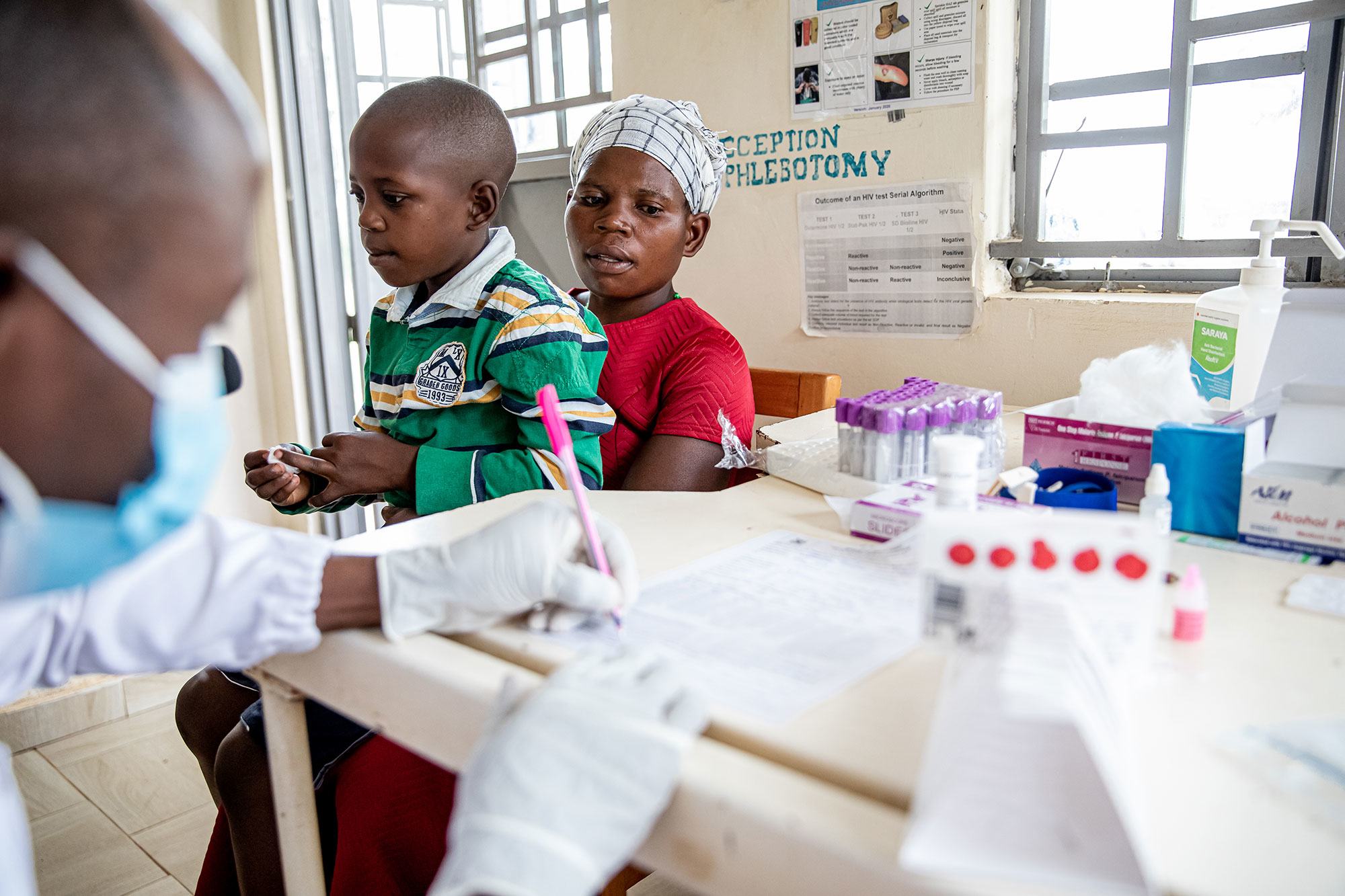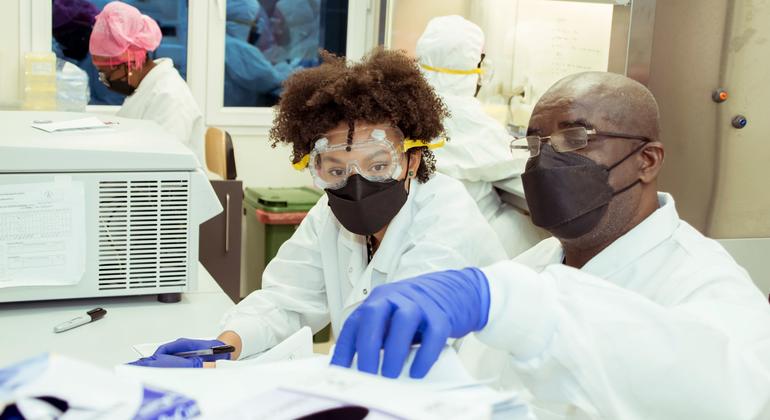UNAIDS calls for urgent global action as progress against HIV falters |

[ad_1]
Globally, the number of new infections dropped by only 3.6 per cent between 2020 and 2021, the smallest annual decline in new HIV infections since 2016, said UNAIDS.
The agency warned that progress in prevention and treatment has faltered worldwide, putting millions of lives at risk.
“In 2021, there were 1.5 million new HIV infections and 650,000 AIDS-related deaths. This translates to 4,000 new HIV infections every day,” said Mary Mahy, UNAIDS Director a.i. Data for Impact.
“That’s 4,000 people who will need to be tested, started on treatment, avoid infecting their partners, and stay on treatment for the rest of their lives. It also translates to 1,800 deaths every day due to AIDS, or one death every minute.”
Danger signal
“In Danger”, the name of the latest report by the Joint UN Programme on HIV and AIDS, coincides with the International AIDS Conference beginning this Wednesday in Montreal.
It shows how new HIV infections are now rising where they had been falling, in places such as Asia and the Pacific, the world’s most populous region. In East and Southern Africa, rapid progress from previous years significantly slowed in 2021.
Despite effective HIV treatment and tools to prevent and detect infection, the pandemic has thrived during COVID-19 , in mass displacement settings, and other global crises that have put a strain on resources and reshaped development financing decisions, to the detriment of HIV programmes.
“If current trends continue, we expect that, in 2025, we’ll have 1.2 million people newly infected with HIV in that year. Again, that’s three times more than the 2025 target of 370.000,” said Ms. Mahy.
Virus-dodging tip
According to the UNAIDS report, voluntary male circumcisions that can reduce infection in men by 60 per cent, have slowed in the past two years.
The UN agency also noticed a slowing in treatment roll-out over the same period. One of the most promising preventive interventions is pre-exposure prophylaxis (PrEP) as it eliminates the risk of contracting the virus after exposure.
The number of people accessing PrEP doubled between 2020 and 2021, from about 820,000 to 1.6 million, primarily in Southern Africa, according to the report. But it is still far from the target set by UNAIDS of 10 million people receiving PrEP by 2025, with cost pushing it out of reach of many, globally.
Unfair play
Marked inequalities within and between countries have also stalled progress in the HIV response, and the disease itself has further widened vulnerabilities.
With a new infection occurring every two minutes in 2021 among young women and teenage girls, it is a demographic that remains particularly exposed.
The gendered HIV impact, particularly in Africa, has become clearer than ever during COVID, with millions of girls out of school, spikes in teenage pregnancies and gender-based violence, disruption to key HIV treatment and prevention services.
In sub-Saharan Africa, teenage girls and young women are three times as likely to acquire HIV as boys and young men.
School’s elementary to beating HIV
Studies show that when girls go to and finish school, their risk of acquiring HIV is significantly reduced. “Millions of girls have been denied the opportunity to go to school as a result of the COVID crisis, millions of them might never return and that has a damaging impact, as does the economic distress that has been caused” by the pandemic, explained Ben Philips, Director of Communications at UNAIDS.
Racial diagnostic disparities have also exacerbated HIV risks. Declines in new HIV diagnoses have been greater among white populations than among black and indigenous people in countries like the United Kingdom, the United States, Canada and Australia.
“Similarly, in 2021 key populations such as sex workers and their clients, gay, people who inject drugs, and transgender people, accounted for 70 per cent of new HIV infections,” said Ms. Mahy.
Legal reforms in slow lane
The UN agency recognizes six countries that have removed laws criminalizing same sex-sex relations.
At least nine have introduced legal avenues for changing gender markers and names, without the requirement of undergoing gender reassignment surgery.
Nevertheless, progress on removing punitive laws that increase the risk of HIV infection and death for marginalised people is still insufficient, including LGBTI people, people injecting drugs, and sex workers.
“We have seen countries altering their laws to permit harsher sentences in cases of HIV exposure,” said Liana Moro, Technical Officer Programme Monitoring and Reporting at UNAIDS.
$8 billion question
Overseas development assistance for HIV from country donors, except the US, has plummeted by 57 per cent over the last decade according to the report, while contributions from those governments for all other sectors increased by 28 per cent in the same period.
Ms. Moro said that UNAIDS needs $29.3 billion by 2025. “In 2021, there was $21.4 billion available for HIV programs in low and middle-income countries. We are $8 billion short from our 2025 target.”
Safe bet
“It is still possible for leaders to get the response back on track to end AIDS by 2030,” said UNAIDS Executive Director Winnie Byanyima in a statement. “Ending AIDS will cost much less money than not ending AIDS. Importantly, actions needed to end AIDS will also better prepare the world to protect itself against the threats of future pandemics.”
UNAIDS estimates that 38.4 million people were living with HIV in 2021. A full 70 per cent of them were receiving treatment and 68 per cent were successfully keeping the virus at bay.
UNAIDS unites the efforts of 11 UN organizations—UNHCR, UNICEF, WFP, UNDP, UNFPA, UNODC, UN Women, ILO, UNESCO, WHO and the World Bank — and works closely with global and national partners towards ending the AIDS epidemic by 2030 as part of the Sustainable Development Goals.
The AIDS pandemic took a life every minute in 2021…
- 650,000 people died, making it a leading cause of death in many countries;
- 2021 saw over 1.5 million new infections, marking the smallest annual decline in new HIV infections since 2016;
- New infections in women and girls occurred every two minutes in 2021;
- In sub-Saharan Africa, girls and young women are three times more likely to acquire HIV as adolescent boys and young men;
- Development assistance to treat HIV from bilateral donors other than the United States has fallen by 57 per cent over the last decade;
- Debt repayments for the world’s poorest countries have reached 171 per cent of all spending on healthcare, education and social protection combined in 2021 – choking countries’ capacity to respond to AIDS.
[ad_2]








